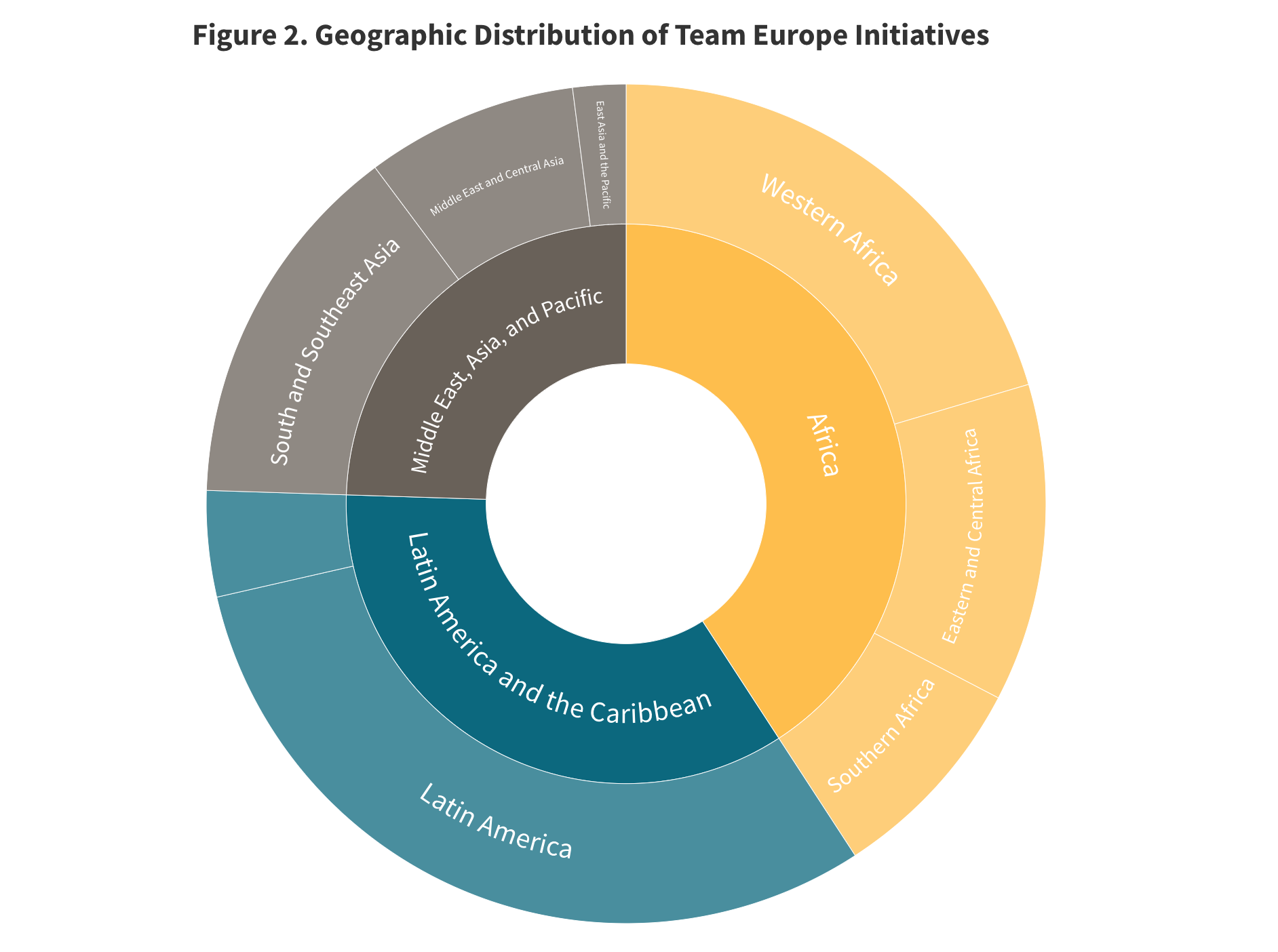Recommended
In 2020, the European Union (EU), together with its Member States and financial institutions, formed “Team Europe” to provide a collective global response to the COVID-19 pandemic. Although born out of a crisis, the Team Europe approach has now become the norm for how investments in developing countries are managed by the EU.
168 Team Europe Initiatives (TEIs) are currently being rolled out across the globe. In this blog, we look at the geographical and sectoral distribution of these TEIs, as well as the Member States and the institutions who are involved in them.
And we look at the outstanding questions around the transparency of the projects, the coherence across the initiatives and the ownership of the investments by partner countries.
A recap of Team Europe Initiatives
TEIs are projects in which the European Union and several Member States and/or European financial institutions pool resources and expertise to tackle a development issue at the country, regional or global levels. To date, a total of 168 TEIs have been put forward, including 132 country TEIs, 32 regional TEIs and 4 global TEIs. Each TEI needs to include at least four Team Europe members.
While the Team Europe Initiative and Joint Programming Tracker monitors the participation of European development actors in TEIs as well as the targeted partner country, sector and financial amounts committed, the expected results are not reported. In a 2022 report, the European Parliament called on the European Commission to report annually on TEIs “within the framework of Neighbourhood, Development and International Cooperation Instrument (NDICI), while evaluating the resources mobilised, development planning and impact, harmonisation and application of EU standards, the EU integration perspective and Member States’ involvement”. But to date, no such report has been presented.
A focus on Sub-Saharan Africa
Out of the 132 TEIs at the country level, more than half (69) are in Sub-Saharan Africa (see figure 1). The region also dominates TEIs at the regional level with 17 TEIs. Latin America and the Caribbean with 26 country TEIs and 6 regional ones follows, trailed by the Middle East, Asia and the Pacific and the EU’s southern and eastern neighbourhood.
While the EU has earmarked 30 percent of the geographic programmes of NDICI–Global Europe for the European Neighbourhood, there are just 23 TEIs focused on the region (12 percent of the total). A recent report from the European Court of Auditors on the NDICI revealed that despite the consolidation of the various external financing instruments for the neighbourhood and for the other regions, the European Commission has failed to institute a uniform and comparable allocation methodology. This highlights the lack of a coherent approach between the Directorate General for International Partnerships (INTPA) and the one for Neighbourhood and Enlargement Negotiations (NEAR).
Figure 1: Number of Team Europe Initiatives, by region
Source: Team Europe Initiative and Joint Programming Tracker on 25th September 2023.
Note: Total number of regional and country-level TEIs reach 163 on the regional dashboard of the Tracker.
Prioritising the EU Green Deal and human development
Our previous analysis of a subset of the TEIs highlighted the strong emphasis on climate-oriented initiatives and a relative absence of health and education. Now, while the focus on the external dimension of the European Green Deal remains, a significant share (58 percent) of the initiatives is directed at human development. No fewer than 10 EU Member States joined forces on a TEI on sexual and reproductive health and rights in Sub-Saharan Africa. This distribution better reflects the priorities of the NDICI–Global Europe regulation which includes a 20 percent spending target for human development.
Figure 2: Number of TEIs, by sector
Source: Team Europe Initiative and Joint Programming Tracker on 25th September 2023.
Note: More than one sector can be assigned to one TEI. Figure only includes regional and country-level TEIs.
The TEIs are dominated by large players
The same three actors continue to top the rankings of participation in the TEIs. France, Germany, and the EIB are each contributing to at least 110 TEIs (see Figure 3). A second group of actors made of a medium-sized development providers (the Netherlands, Spain, Sweden, Italy and Belgium) is also involved in between a third to half of the TEIs. The overall picture still shows that TEIs are still dominated by large and medium-sized EU Member States, leaving smaller development providers and non-EU Member States such as Switzerland and the United Kingdom almost absent from the TEI process.
Figure 3: Participation ifn TEIs, by team Europe actors
Source: Team Europe Initiative and Joint Programming Tracker on 25th September 2023.
And still, none the wiser
With 168 initiatives supposedly in play, we are still none the wiser as to how the TEIs are being designed and implemented, including the extent to which investments are jointly owned by partner countries. We continue to be in the dark on the project financials including how much has been committed, by whom and what specifically for. Furthermore, while TEIs are meant to be the main vehicle for the implementation of the EU’s Global Gateway, they appear, at best, a distant relation, not linked in any discernible way. Three years in, there continue to be so many unanswered questions.
Disclaimer
CGD blog posts reflect the views of the authors, drawing on prior research and experience in their areas of expertise. CGD is a nonpartisan, independent organization and does not take institutional positions.






